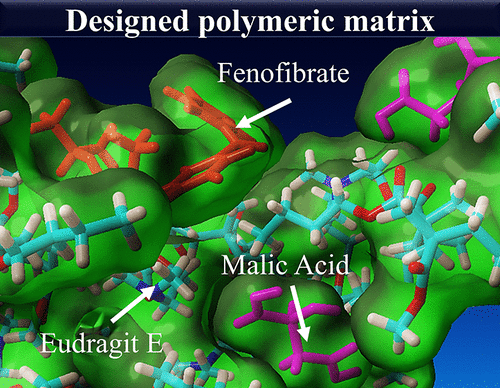当前位置:
X-MOL 学术
›
Mol. Pharmaceutics
›
论文详情
Our official English website, www.x-mol.net, welcomes your
feedback! (Note: you will need to create a separate account there.)
Modified Polymer Matrix in Pharmaceutical Hot Melt Extrusion by Molecular Interactions with a Carboxylic Coformer
Molecular Pharmaceutics ( IF 4.5 ) Pub Date : 2018-11-28 00:00:00 , DOI: 10.1021/acs.molpharmaceut.8b00920 Felix Ditzinger , Uta Scherer , Monica Schönenberger , René Holm 1, 2 , Martin Kuentz
Molecular Pharmaceutics ( IF 4.5 ) Pub Date : 2018-11-28 00:00:00 , DOI: 10.1021/acs.molpharmaceut.8b00920 Felix Ditzinger , Uta Scherer , Monica Schönenberger , René Holm 1, 2 , Martin Kuentz
Affiliation

|
Hot melt extrusion (HME) has become an essential technology to cope with an increasing number of poorly soluble drug candidates. However, there is only a limited choice of pharmaceutical polymers for obtaining suitable amorphous solid dispersions (ASD). Considerations of miscibility, stability, and biopharmaceutical performance narrow the selection of excipients, and further technical constraints arise from needed pharmaceutical processing. The present work introduces the concept of molecularly targeted interactions of a coformer with a polymer to design a new matrix for HME. Model systems of dimethylaminoethyl methacrylate copolymer, Eudragit E (EE), and bicarboxylic acids were studied, and pronounced molecular interactions were demonstrated by 1H, 13C NMR, FTIR spectroscopy, as well as by different techniques of microscopic imaging. A difference was shown between new formulations exploiting specifically the targeted molecular interactions and a common drug–polymer formulation. More specifically, a modified matrix with malic acid exhibited a technical extrusion advantage over polymer alone, and there was a benefit of improved physical stability revealed for the drug fenofibrate. This model compound displayed greatly enhanced dissolution kinetics from the ASD formulations. It can be concluded that harnessing molecularly designed polymer modifications by coformers has much potential in solid dispersion technology and in particular regarding HME processing.
中文翻译:

通过与羧化共聚物的分子相互作用在药物热熔挤出中改性的聚合物基体
热熔挤出(HME)已成为应付越来越多的难溶性候选药物的必不可少的技术。但是,只有很少的选择才能获得合适的无定形固体分散体(ASD)的药物聚合物。混溶性,稳定性和生物制药性能的考虑限制了赋形剂的选择,并且进一步的技术限制来自所需的药物加工。本工作介绍了共聚体与聚合物的分子靶向相互作用的概念,以设计用于HME的新基质。研究了甲基丙烯酸二甲氨基乙基乙酯共聚物,Eudragit E(EE)和二羧酸的模型系统,并通过1 H,13证明了明显的分子相互作用13 C NMR,FTIR光谱以及通过显微成像的不同技术。在专门利用靶向分子相互作用的新制剂和常见的药物-聚合物制剂之间显示出差异。更具体地,用苹果酸改性的基质比单独的聚合物表现出技术上的挤出优势,并且对于非诺贝特药物具有改善的物理稳定性的益处。该模型化合物显示出从ASD配方中大大增强的溶解动力学。可以得出结论,在固相分散技术中,特别是在HME处理中,利用共形成剂进行分子设计的聚合物改性具有很大的潜力。
更新日期:2018-11-28
中文翻译:

通过与羧化共聚物的分子相互作用在药物热熔挤出中改性的聚合物基体
热熔挤出(HME)已成为应付越来越多的难溶性候选药物的必不可少的技术。但是,只有很少的选择才能获得合适的无定形固体分散体(ASD)的药物聚合物。混溶性,稳定性和生物制药性能的考虑限制了赋形剂的选择,并且进一步的技术限制来自所需的药物加工。本工作介绍了共聚体与聚合物的分子靶向相互作用的概念,以设计用于HME的新基质。研究了甲基丙烯酸二甲氨基乙基乙酯共聚物,Eudragit E(EE)和二羧酸的模型系统,并通过1 H,13证明了明显的分子相互作用13 C NMR,FTIR光谱以及通过显微成像的不同技术。在专门利用靶向分子相互作用的新制剂和常见的药物-聚合物制剂之间显示出差异。更具体地,用苹果酸改性的基质比单独的聚合物表现出技术上的挤出优势,并且对于非诺贝特药物具有改善的物理稳定性的益处。该模型化合物显示出从ASD配方中大大增强的溶解动力学。可以得出结论,在固相分散技术中,特别是在HME处理中,利用共形成剂进行分子设计的聚合物改性具有很大的潜力。











































 京公网安备 11010802027423号
京公网安备 11010802027423号